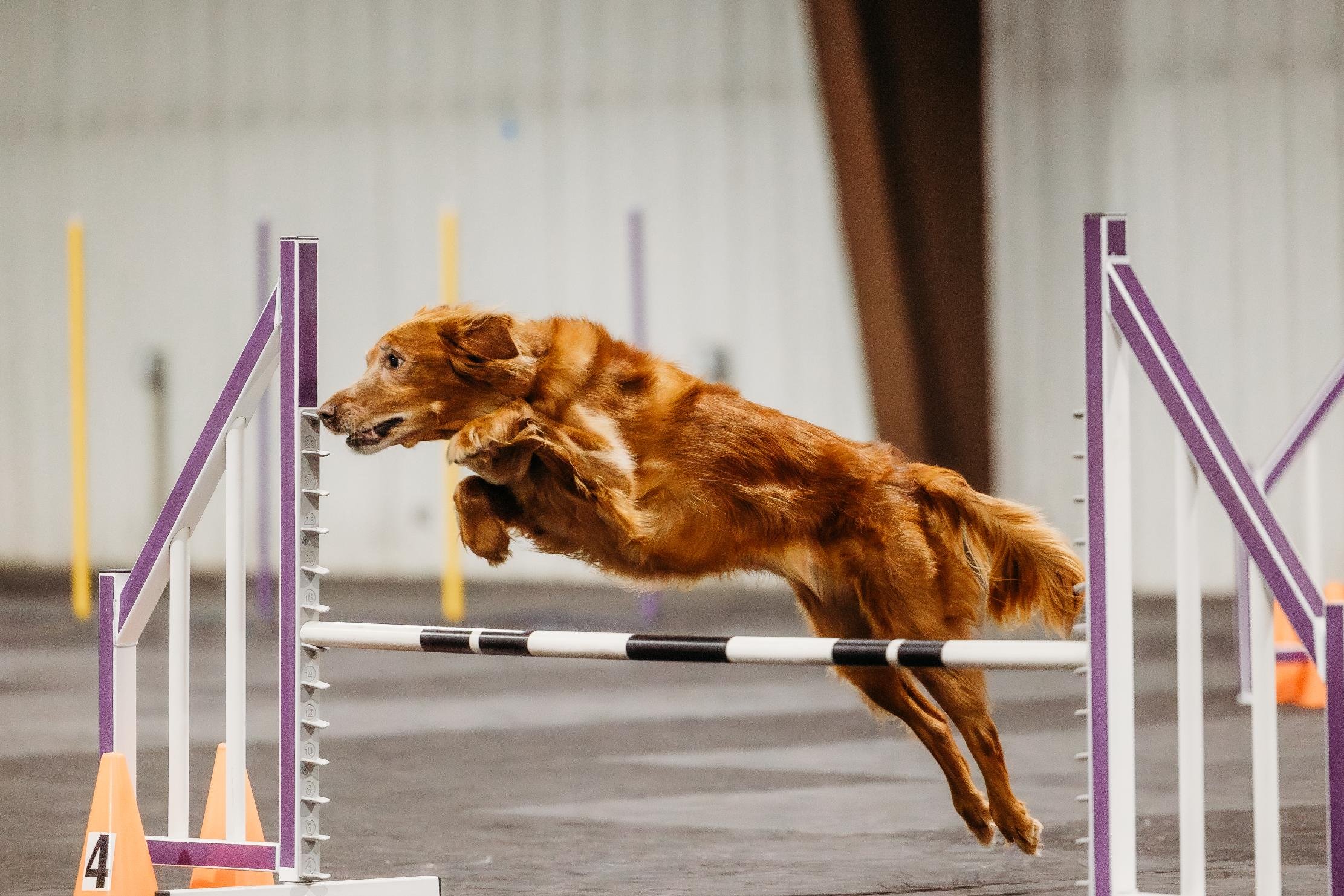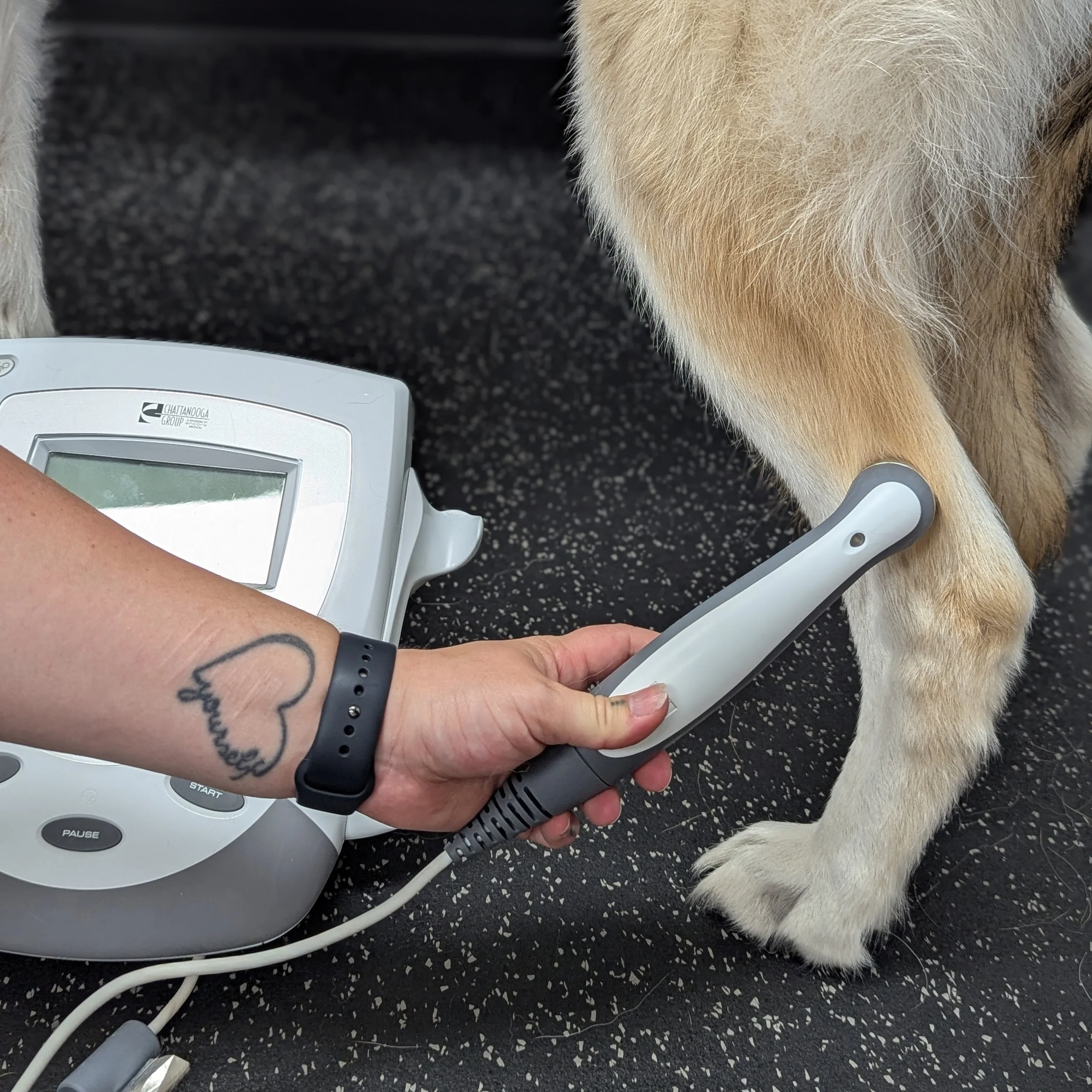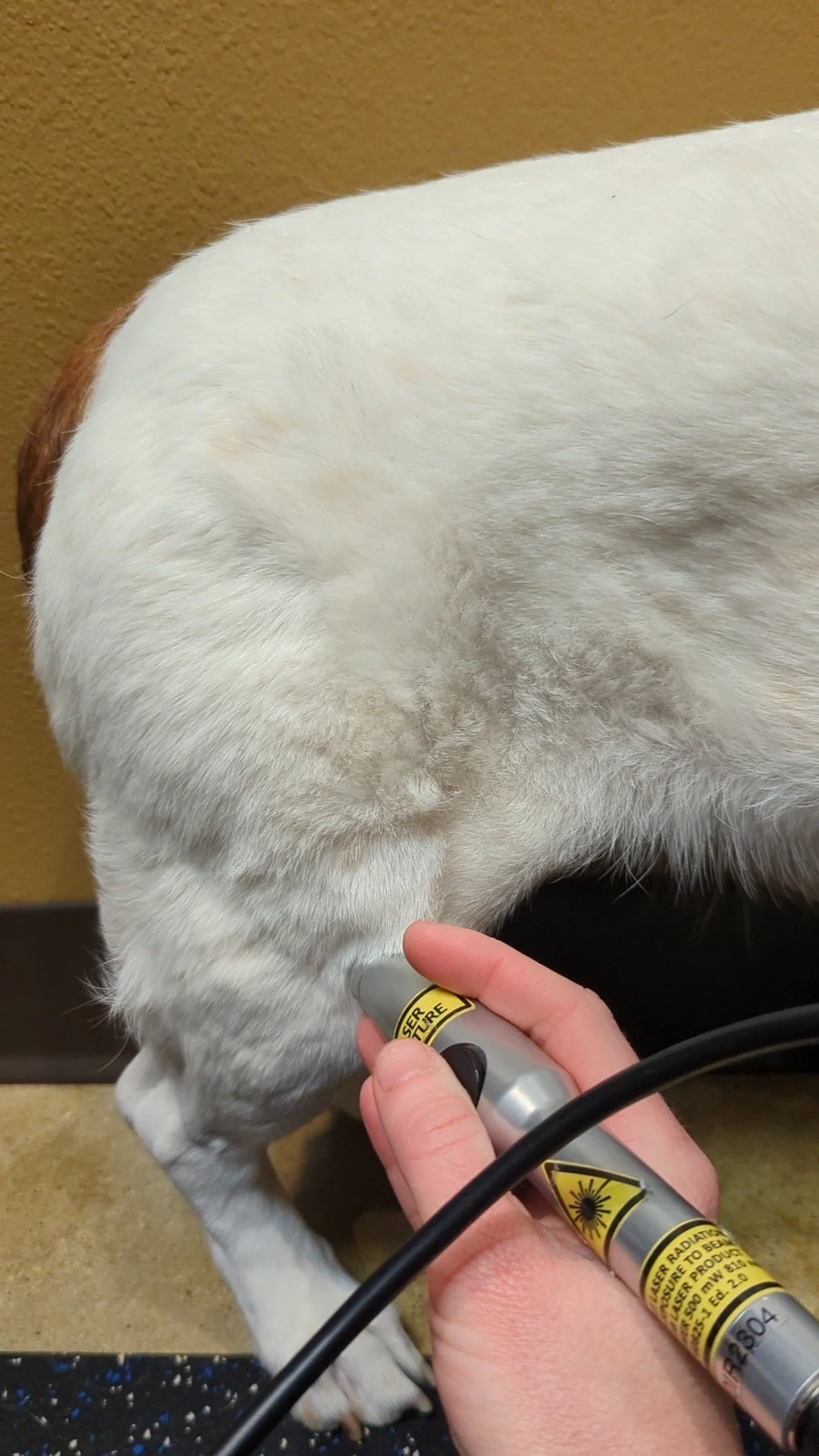
Helping Pets Move Better, Feel Better, Live Better
CANINE REHABILITATION
We believe in supporting the body with the appropriate treatment, which can mean that sometimes pills aren’t the best option. Our canine rehabilitation services can help reduce pain, improve mobility, and help your pet get back on its feet—whether it is recovering from surgery, managing arthritis, or simply getting older and slowing down.
With a gentle, personalized approach, our certified rehabilitation therapist, Dr. Abby Sullivan, creates targeted treatment plans that combine therapeutic techniques with compassionate care. Every plan is tailored to your pet’s specific needs and goals.
Patients that benefit from rehab are dealing with:
-
Ask about our post-op rehab package! Dogs who undergo an in-clinic rehabilitation program post surgery for cranial cruciate ligament (CCL) repair are twice as likely to have a favorable recovery than dogs who do at-home exercises alone. In-clinic rehab can also help your dog recover from hip surgery (FHO), Achilles tendon surgery, shoulder surgery, fractures, amputations, elbow surgery (OCD), and more.
-
Our rehabilitation team can help you navigate a variety of neurologic conditions such as Degenerative Myelopathy (DM), Fibrocartilaginous Embolism (FCE), Intervertebral Disc Disease (IVDD), spinal trauma, and more. Rehab helps patients regain more mobility with less time after neurological trauma, and it can help delay the progression of degenerative processes.
-
Arthritis is a painful condition that affects many aging pets, and its impact can worsen with age, excess weight, and concurrent disease. Though this condition cannot be cured, it can be managed and your pet’s quality of life improved via a variety of treatment modalities, including supplements, therapeutic exercises, diet, and, pain relief.
-
Ask about our weight loss package! A healthy body weight is of the utmost importance to your dog’s health. Reports show that 50% of dogs in the United States are overweight. This can lead to a multitude of health problems such as joint issues, arthritis, heart and lung disease, lipomas (fatty tumors), bladder problems, and shortened lifespan.
Current rehab clients
Access our library of exercise videos here:
What Canine Rehab Looks Like After Orthopedic Surgery
“Dogs who go through post-op rehab tend to regain strength more quickly, experience less compensatory pain in other joints or muscles, and are less likely to have setbacks.”
Canine rehabilitation is one of the most valuable tools we have to ensure a smooth and successful recovery after orthopedic surgery. At Two Rivers Veterinary Hospital, our post-operative rehab program typically begins the week of surgery and starts with two weeks of photobiomodulation therapy (laser therapy). This non-invasive treatment helps reduce pain, control inflammation, and accelerate the early phases of tissue healing. It's a gentle way to support your pet’s comfort and get them on the road to recovery faster.
Following the laser phase, we begin a structured 6–8 week rehabilitation program that incorporates controlled exercises both on land and in our underwater treadmill. These sessions are designed to maintain muscle strength and joint mobility during the healing period—when your pet is restricted from their usual activity—and guide the body to heal properly. Our exercises are tailored to each patient and gradually become more challenging as strength, balance, and range of motion improve.
One of the biggest benefits of a formal rehab program is that it promotes faster healing and better long-term function. Dogs who go through post-op rehab tend to regain strength more quickly, experience less compensatory pain in other joints or muscles, and are less likely to have setbacks. Rehab also allows our trained team to detect and correct any issues with limb use or abnormal gait early in the process, before they become long-term problems.
Not every dog is an ideal rehab candidate. Pets who are very anxious at the vet and won’t take treats—or those who are aggressive or extremely noise-sensitive—may not find the experience helpful at first. However, many dogs who struggle with vet visits actually warm up by the second or third rehab appointment. These visits feel different: fewer needles, lots of treats, and plenty of praise. Even dogs who don’t like water often tolerate the underwater treadmill well. If there’s any uncertainty about how your pet will respond, we’re happy to schedule one or two “pre-hab” sessions before surgery to see how they do with our facility, team, and tools.
Ultimately, rehab is about setting your dog up for the best possible recovery—restoring strength, reducing pain, and helping them get back to the life they love. If you’re considering rehab for your pet, let’s talk about whether it’s the right fit.
Dr. Abby Sullivan: Rehab Care You Can Trust
At the heart of Two Rivers' canine rehabilitation program is Dr. Abby Sullivan, a dedicated veterinarian specially trained through the Canine Rehab Institute.
With a passion for helping pets move better and feel their best, Dr. Sullivan combines top-tier clinical training with a deep commitment to individualized, compassionate care. Whether your dog is recovering from surgery, managing chronic pain, or simply needs a little help aging gracefully, Dr. Sullivan brings expert hands and a thoughtful approach to every rehab plan.
Follow along with rehab success stories, tips, and behind-the-scenes glimpses of her work on Instagram and TikTok: @drabbyrehabvet.
Dr. Abby Sullivan’s Top 10 Tips for Choosing a Joint Supplement for Your Pet
As a veterinarian trained in canine rehabilitation, I get a lot of questions about joint supplements. The truth is, not all supplements are created equal. Here are my top five things to look for—and five things to avoid—when choosing a product for your pet:
5 Things to Look For:
Clinically studied ingredients
Choose supplements containing ingredients with proven benefit—like glucosamine, chondroitin, green-lipped mussel, collagen peptides, hyaluronic acid, and MSM.Veterinary formulation or recommendation
Products developed by veterinary professionals or backed by peer-reviewed research tend to be more trustworthy and effective.Transparent labeling
Look for clear dosing instructions and exact ingredient amounts—no vague “proprietary blends.”Quality assurance
Third-party testing and certification (like NASC—National Animal Supplement Council) ensure the product contains what it says it does.Palatability and form
Chews, powders, or liquids that your pet actually enjoys make daily use a whole lot easier—and more effective.
5 Things to Avoid:
Unrealistic claims
Be wary of promises to “cure arthritis” or “reverse aging.” Good supplements support mobility—they’re not magic.Low-dose or filler-heavy formulas
If active ingredients are listed but dosed too low to matter, you're just wasting money.Supplements made for humans
Dogs and cats metabolize ingredients differently—human supplements aren’t formulated with their safety in mind.Unknown manufacturers
Avoid buying from companies without clear manufacturing practices, reviews, or veterinary backing.One-size-fits-all promises
Joint care isn’t one-size-fits-all. Your pet’s age, breed, activity level, and condition matter. Talk with your vet to tailor a plan that works.









